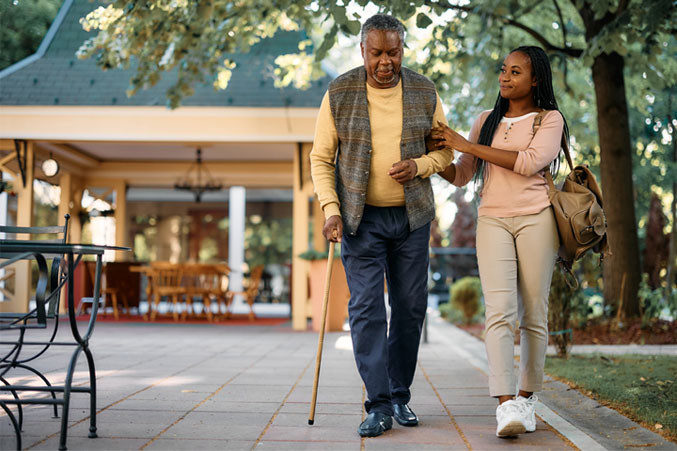By Nancy E. Johnson, Certified personal trainer, NSCA CSCS

The key word here is proprioception, which is defined as our brains’ ability to constantly monitor where our limbs are in space. Proprioception can be trained just as strength and balance can. We can train our brains to monitor our proprioception by keeping physically active and challenging our bodies in the three planes of motion:
- Sagital plane or any movement that goes forward or backward, such as walking, bending, arching your back, or squatting.
- Frontal plane or any side-to-side movement, such as side-bending or side-to-side shuffling.
- Transverse plane or any rotational movement, such as twisting any joint or doing push-ups.
Most of our motion is in the sagital plane or our forward and backward movements; therefore, it is especially critical to challenge your body in the frontal (side-to-side) and transverse (rotational) planes. Since proprioception is easily trained, you simply need to practice moving in all the planes.
Again, walking is a sagital plane movement. You can challenge yourself by walking quickly, looking forward, and paying attention to your stride length. Shuffling is the way our bodies respond to weakening proprioception.
Walking backwards, swinging your arms, tightrope or tandem walking, and skipping are fun and easy movements to perform in the sagital plane. Any side-to-side movement is in the frontal plane. Challenge your side-bending by holding a weight at your side and bending from side to side. This is an easy movement to perform. You can even try it with a light bag of groceries in your hand. You can also challenge your rotational plane of motion by doing cross-body punches, twisting and reaching, and performing any rotating movement of your shoulders, hips and ankles.

Vision is tied in closely with your proprioception. Keeping you home well lit and wearing any necessary corrective eyewear is critical to allow your vision to help your brain monitor where your limbs are in space. If you’re not getting enough movement and activity, your proprioception will diminish. Note: When performing any of these movements, make sure your space is clutter-free to avoid tripping.
In conclusion, we need to just move! Paying attention to variations in how we move is even more beneficial. The body is a quick learner and it remembers past movements making it easier for us to keep from falling. Good luck, keep active and you’ll keep your body happy.

